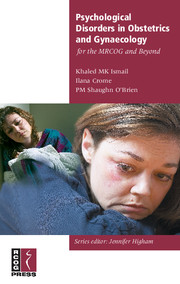Book contents
- Frontmatter
- Contents
- Abbreviations
- Introduction
- 1 Diagnosis and management of psychological problems
- 2 Basic science
- 3 The menarche
- 4 The menstrual cycle
- 5 Psychological aspects of infertility and its management
- 6 Pregnancy and the puerperium
- 7 Eating disorders
- 8 Menopause and perimenopause
- 9 Substance use disorders
- 10 Other disorders
- Further Reading
- National organisations and support groups
- Index
9 - Substance use disorders
Published online by Cambridge University Press: 05 July 2014
- Frontmatter
- Contents
- Abbreviations
- Introduction
- 1 Diagnosis and management of psychological problems
- 2 Basic science
- 3 The menarche
- 4 The menstrual cycle
- 5 Psychological aspects of infertility and its management
- 6 Pregnancy and the puerperium
- 7 Eating disorders
- 8 Menopause and perimenopause
- 9 Substance use disorders
- 10 Other disorders
- Further Reading
- National organisations and support groups
- Index
Summary
Epidemiology
Specialists in obstetrics and gynaecology should be aware of the nature and extent of substance misuse in the UK. It is important to realise the scale of the problem, especially in young people, including young women of reproductive age. The trend is towards increased use over the last decade. Polydrug misuse (the ‘pick and mix’ phenomenon) is common.
The age at which young people start substance misuse is decreasing. Young people misuse for many reasons: because their friends do, out of curiosity, to feel good, because of low self-esteem, poor achievement at school, family history of drugs or drink, violence in the family and emotional distress.
The Confidential Enquiries into Maternal Deaths (2000–2002) found that, when all deaths up to 1 year from delivery were taken into account, psychiatric illness was not only the leading cause of indirect death, but also the leading cause of maternal deaths overall. Of the 391 women whose deaths were reported to the Enquiries, 8% were substance misusers.
An overwhelming 20% of 13 year olds and 25% of 15 year olds smoke daily. For the first time girls have overtaken boys in prevalence of cigarette use. Nearly 50% of young men aged 16–24 years drink over the ‘safe’ recommended limit of 3 units of alcohol per day for adult men. Some 40% of young women drink more than 2 units per day (or the safe limit for adult women). Twenty-four percent (2.3 million) of 16–24 year olds have used an illicit drug in the previous year.
- Type
- Chapter
- Information
- Publisher: Cambridge University PressPrint publication year: 2006



